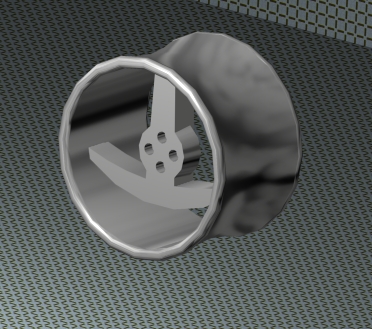Taming a heavy wheel/tire combo
#1
I've read a number of different well written responses to how the heavier wheel/tire combo will make an already anemic 1.8 perform just that much more poorly. And in the case of acceleration, all we need is more power. No problem. That's easy enough to solve.
What I'm really looking for is how the extra weight hurts the ride quality of a street machine. Purely a hot street car. Obviously being willing to take on the extra weight of "pretty" wheels opens up a lot of options. But I don't think anyone wants to drive a car that feels like a box of rocks on a freight train.
This query is kind of directed at the road racing guys, if only for their experience in setting up suspensions. We know lighter is better, lets move past that point.
Can you up your spring rate to compensate for the added wheel/tire weight? I ran a very heavy spring rate on my last car and was shocked at how well it actually rode on the street. I was anticipating a jarring, horrible ride and was completely wrong. But that car weighed 1200lbs more than a miata. HUGE difference. I'm not even sure my previous experience gives me a base of comparison in this matter.
Can you adjust your rebound and dampening settings (assuming you have a decent set of adjustables) to compensate?
In short, how do you tame a 20lb wheel? And have an acceptable street ride? Can you?
---Cobra
What I'm really looking for is how the extra weight hurts the ride quality of a street machine. Purely a hot street car. Obviously being willing to take on the extra weight of "pretty" wheels opens up a lot of options. But I don't think anyone wants to drive a car that feels like a box of rocks on a freight train.
This query is kind of directed at the road racing guys, if only for their experience in setting up suspensions. We know lighter is better, lets move past that point.
Can you up your spring rate to compensate for the added wheel/tire weight? I ran a very heavy spring rate on my last car and was shocked at how well it actually rode on the street. I was anticipating a jarring, horrible ride and was completely wrong. But that car weighed 1200lbs more than a miata. HUGE difference. I'm not even sure my previous experience gives me a base of comparison in this matter.
Can you adjust your rebound and dampening settings (assuming you have a decent set of adjustables) to compensate?
In short, how do you tame a 20lb wheel? And have an acceptable street ride? Can you?
---Cobra
#2
Don't run very low profile tires. You'll lose grip with heavy wheels.
It's not the overall bump and rebound rates that "tame" heavy wheels.
Shocks need to have low stiction. Teins are pretty low stiction, so are Xidas, and so are Bilsteins if they have their gas pressure on the lower side. You also need said shocks to *not* have very soft very-low-speed damping. Teins don't fit this bill.
It's not the overall bump and rebound rates that "tame" heavy wheels.
Shocks need to have low stiction. Teins are pretty low stiction, so are Xidas, and so are Bilsteins if they have their gas pressure on the lower side. You also need said shocks to *not* have very soft very-low-speed damping. Teins don't fit this bill.
#12
This is backwards. You choose a primary body/spring resonant frequency "bounce frequency", which set the spring rates, then the damper rates are selected to match the above.
2nd, the dampers are primarily designed to damp the body-on-spring motion. The secondary resonance of wheel-on-tire-sidewall (wheel hop), which gets worse with heavier wheels, is a secondary concern. This said resonance is a "parasitic", undesired side effect. However it also needs to be damped by the dampers. However the wheel weight doesn't affect the necessary primary damper rates which are set by vehicle weight and spring rate. This is true for setups where the tire sidewall spring rate is a lot higher than the springs'. (e.g. not F1).
Read my first post on which damper parameters affect damping the wheel hop. They are *not* the first order damper specs.
#13
This ^^^.
Dampers are used to control the springs.
The issue is . . . what are the springs? In street driving, you only consider the springs. In track and, especially, autocross, you need to damp both the springs and the sway bar. That's why it's handy to have some adjustment.
The ratio of body weight (sprung weight) to wheel weight (unsprung weight) should be as high as possible to minimize disturbances. As we are blessed with very little sprung weight, minimal unsprung weight is critical.
Dampers are used to control the springs.
The issue is . . . what are the springs? In street driving, you only consider the springs. In track and, especially, autocross, you need to damp both the springs and the sway bar. That's why it's handy to have some adjustment.
The ratio of body weight (sprung weight) to wheel weight (unsprung weight) should be as high as possible to minimize disturbances. As we are blessed with very little sprung weight, minimal unsprung weight is critical.
Thread
Thread Starter
Forum
Replies
Last Post













